The difference between a natural versus synthetic diamond solitaire

At first glance, the perennial interest in natural diamonds seems to be disrupted by the resurgence of its synthetic rival. But the more the latter conquers the markets, the more the other seeks to establish a solid base, an indisputable reason for its existence. Thus, for the buyer, deciding between natural or synthetic will be a clever personal calculation: it will be a choice that he will not regret. Let's take a look at the particularities of these types of stone, their respective advantages and their evolution.
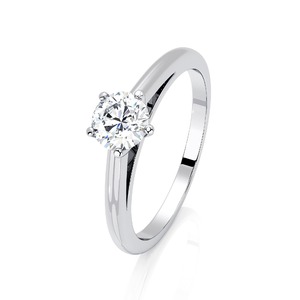
Engagement ring
5 Claws Classic
Solitaire diamond with 5 claws. Solitaire offered in 18k white, yellow or pink gold (750/000) or in…
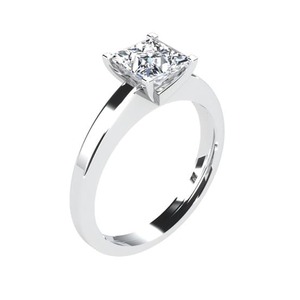
Ring
PRINCESS ROYAL
Style full of sparkle without being ostentatious. The dawn of passion and romance. Hand made to…
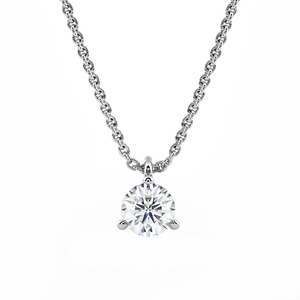
Pendant & Necklace
3 CLAWS B
Diamond pendant with 3 claws to enhance the stone as much as possible. Crimping carried out with…
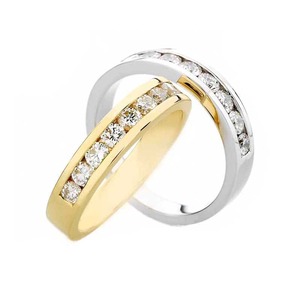
Wedding Band
NOCEA
A modern style: diamonds are entwined in a crimped said "rail", a very contemporary…
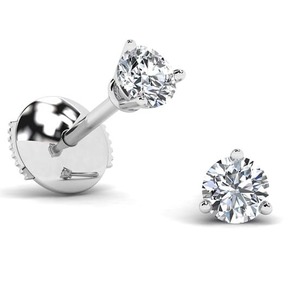
Earrings
3 CLAWS PREMIUM
Handmade earrings with diamond belt based on mid height of the claws which are based on a rabbet.…
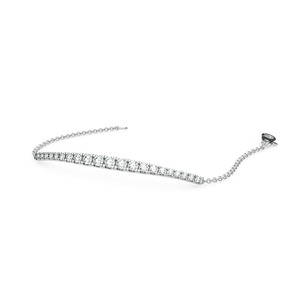
Bracelet
ERGO
Very modern, bright without being ostentatious. Pleasure of playing with the brilliance of…
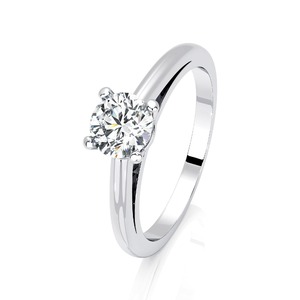
Engagement ring
4 Claws Classic
Solitaire diamond with 4 claws, a classic and timeless style. The highlighting of the diamond…
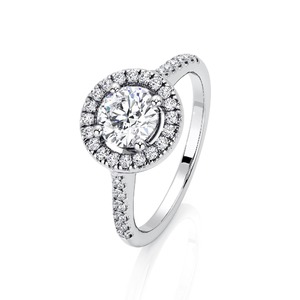
Ring
BRILLIANT
The perfect gift for your ever lasting love. Hand made french jewellery. Gold 750/000. Delivered in…
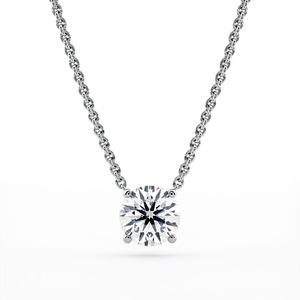
Pendant & Necklace
4 CLAWS
4 claw diamond pendant without bail. Forçat chain fixed by 2 rings on each side of the…
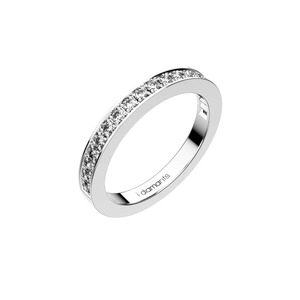
Wedding Band
RUBAN
Classic diamond wedding ring. 18 carats gold. Made in France. Delivered in a jewellery box. See…
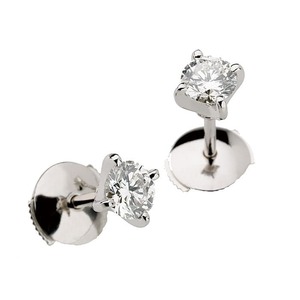
Earrings
4 CLAWS CRADLE
Handmade diamond earrings, 4 claws heart-shaped cradle setting. Elegant exclusive design by…
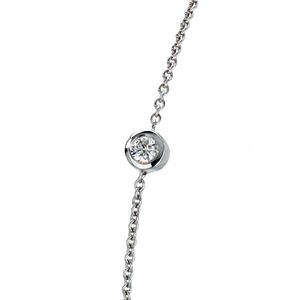
Bracelet
ETERNITY
Diamond bezel bracelet. Very popular, a style that is both classic and contemporary. 18 carats…

Engagement ring
5 Claws Classic
Solitaire diamond with 5 claws. Solitaire offered in 18k white, yellow or pink gold (750/000) or in…

Ring
PRINCESS ROYAL
Style full of sparkle without being ostentatious. The dawn of passion and romance. Hand made to…

Pendant & Necklace
3 CLAWS B
Diamond pendant with 3 claws to enhance the stone as much as possible. Crimping carried out with…

Wedding Band
NOCEA
A modern style: diamonds are entwined in a crimped said "rail", a very contemporary…

Earrings
3 CLAWS PREMIUM
Handmade earrings with diamond belt based on mid height of the claws which are based on a rabbet.…

Bracelet
ERGO
Very modern, bright without being ostentatious. Pleasure of playing with the brilliance of…

Engagement ring
4 Claws Classic
Solitaire diamond with 4 claws, a classic and timeless style. The highlighting of the diamond…

Ring
BRILLIANT
The perfect gift for your ever lasting love. Hand made french jewellery. Gold 750/000. Delivered in…

Pendant & Necklace
4 CLAWS
4 claw diamond pendant without bail. Forçat chain fixed by 2 rings on each side of the…

Wedding Band
RUBAN
Classic diamond wedding ring. 18 carats gold. Made in France. Delivered in a jewellery box. See…

Earrings
4 CLAWS CRADLE
Handmade diamond earrings, 4 claws heart-shaped cradle setting. Elegant exclusive design by…

Bracelet
ETERNITY
Diamond bezel bracelet. Very popular, a style that is both classic and contemporary. 18 carats…
Synthetic or natural diamond ? Which one to choose for your solitaire diamond ring ?
Before opting for any diamond to magnify your solitaire ring, here are a few points to help you see more clearly when making your purchase.
The natural diamond: a mineral, a miracle of nature
Prehistory specialists estimate that diamonds were formed underground more than 3.3 billion years ago. But their discovery is very recent: 1000 years BC, in India. This gemstone is often called a "miracle of nature" because of its formation process that lasted a few million years. This happened at a depth of about 250 kilometers below the earth's surface.
The discovery in 1797 of the chemical composition of natural diamond has, on the one hand, increased the interest in this rare ornamental stone. On the other hand, it also allowed some people a few centuries later to invent a synthetic version of diamond. However, the technological prowess is still not able to compete with the generosity of Mother Nature. Indeed, each stone extracted from the earth's mantle contains an enigma waiting to be solved.
Each piece of natural diamond also has its own story, no two are alike. And it is said that this stone has particular virtues and meanings to be considered closely. Among the powers associated with diamonds are constancy, fidelity, reconciliation and marital love. Don't we call "diamond wedding" the celebration of 60 years of marriage for a couple?
Synthetic diamond: a laboratory product
The birth of the first synthetic diamond dates back to 1954. This was the year in which Howard Tracy Hall, a physics and chemistry engineer at General Electric, developed a prototype. At the time, the results of his creations were intended for industrial applications. Forty years later, in the 1990s, the first imitations of the solitaire diamond for jewelry were produced.
Two methods are at the origin of synthetic diamond: the HPHT method and the CVD method. The first method produces diamonds from a high pressure and a high temperature, hence the acronym HPHT for High Pressure High Temperature. The second method is called CVD or Chemical Vapor Deposition. This method consists of the application of layers on a plasma over a period of 1 month on average.
Thus, the making of a solitary synthetic diamond can only be done in a laboratory. It is in such places that products similar to natural diamonds and having the same physical and chemical characteristics are manufactured. To the naked eye, the differences between the two types of diamonds remain imperceptible. Only very sophisticated machines can differentiate them.
What are the major differences between a natural and synthetic diamond?
Certainly these two varieties of diamonds have proven similarities: but the divergences seem inescapable. First of all, both have opposite origins: if natural diamonds are extracted from mines, synthetic diamonds are cultivated in laboratories. This is why they are called "laboratory-grown diamonds". And their production depends on the two methods mentioned above.
It is also worth mentioning the dissimilar financial values of the two stones. The rarity of natural diamonds since the dawn of time justifies their high and stable price. While the price of synthetic diamonds is 25% to 50% lower than that of natural diamonds and is constantly falling with the intensification of laboratory production.
Why buy a natural diamond solitaire rather than a synthetic diamond solitaire?
The duel between the natural diamond and its synthetic variant in solitaire will not end until the real reasons to lean towards one or the other are highlighted. Here are some of them.
The laboratory diamond solitaire ring has the same physical and chemical characteristics as the natural diamond solitaire, but has neither the history nor the strong symbolism
The diamond solitaire conveys very strong signs and meanings to the point of pushing a loving person to offer it to the one of his heart. Giving a diamond ring or a diamond solitaire will never be seen as an insignificant gesture. And this, regardless of the nature of the ornamental stone: whether it is cultivated or natural, the meaning remains more or less the same.
With what the laboratories offer in terms of diamonds, it seems difficult to distinguish between natural and synthetic diamonds. In fact, some people claim that laboratory-grown stones have a purer appearance than those mined underground. It is therefore difficult to decide, especially for those who are more concerned about their budget.
But what is certain is that the natural diamond solitaire beats its opponent for rarity and authenticity. The fact of adorning one's finger with a jewel set with a precious stone is in itself a strong argument. And that's not all: this same stone formed millions of years ago has evolved singularly. It must therefore have a personal story to tell its owner.
Price of a natural diamond solitaire: it will be more expensive at the purchase than the synthetic one, but will take value in the time whereas the synthetic diamond will lose some
It is common to face accusations centered on the acquisition price of a solitaire natural diamond ring. Indeed, an engagement ring of this kind will sell for several thousand euros. While the synthetic version can be obtained for hundreds of euros only. And it must be said that the market is flooded by jewelry with diamonds grown in the laboratory.
Except that, nowadays, natural diamonds are rare. However, the adage says that "what is rare is expensive". The conclusion is that the day when this stone loses all its value may never come. The more time passes, the more important the natural diamond becomes; the rarer it becomes, the more interest it arouses. This is not the case with synthetic stones, which, on the contrary, lose their value over time.
Thus, the meteoric rise of synthetic diamonds can never tarnish the image of natural diamonds. This is a real motivation to invest in them. Indeed, buying a ring set with a natural diamond today could save the owner if ever a serious financial crisis were to occur.
Social impacts vary: natural diamonds sustain entire communities in mining countries
The rivalries between the pro-natural diamond and the pro-synthetic diamond are likely to continue. Both camps accuse each other of harming nature. While the opposing camp points to the energy-intensive nature of growing diamonds in the lab, the other camp claims that natural diamond mining disrupts the local ecosystem. However, companies specializing in natural diamond mining are required to comply with very specific specifications and strict rules.
In addition, very recently, "zero emission" projects have been developed to reduce the carbon footprint of the entire process. At the same time, fans of natural diamonds like to point out the positive social and economic impact of their exploitation. Indeed, the export of diamonds has always allowed some diamond-producing countries to strengthen their economies, and to improve their educational systems and the health of their populations.
Currently, more than 10 million people benefit from the financial spin-offs of natural diamonds. In Botswana, for example, revenues from the mining of this precious stone contributed to an 8% growth in GDP in the 1990s.